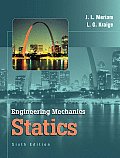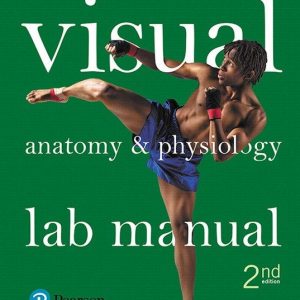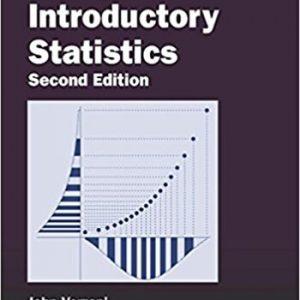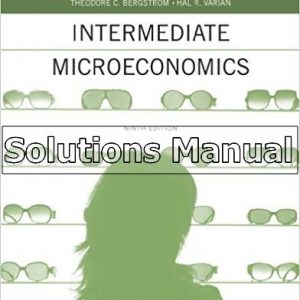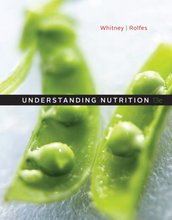Instant download Solutions Manual to accompany Engineering Mechanics – statics 6th edition 9780471739326 pdf docx epub after payment.
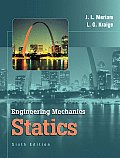
Product details:
- ISBN-10 : 9780471739326
- ISBN-13 : 978-0471739326
- Author:
Table of contents:
CHAPTER 1 INTRODUCTION TO STATICS 000 CHAPTER 2 FORCE SYSTEMS 000 CHAPTER 3 EQUILIBRIUM 000 CHAPTER 4 STRUCTURES 000 CHAPTER 5 DISTRIBUTED FORCES 000 CHAPTER 6 FRICTION 000 CHAPTER 7 VIRTUAL WORK 000 APPENDICES A AREA MOMENTS OF INERTIA[WC B MASS MOMENTS OF INERTIA 000 C SELECTED TOPICS OF MATHEMATICS 000 D USEFUL TABLES 000 INDEX 000 xiii ftoc.qxd 1/12/06 9:51 AM Page xiii CONTENTS Chapter 1 INTRODUCTION TO STATICS 000 1/1 Mechanics 000 1/2 Basic Concepts 000 1/3 Scalars and Vectors 000 Conventions for Equations and Diagrams 000 Working with Vectors 000 1/4 Newton?s Laws 000 1/5 Units 000 SI Units 000 U.S. Customary Units 000 Primary Standards 000 Unit Conversions 000 1/6 Law of Gravitation 000 Gravitational Attraction of the Earth 000 1/7 Accuracy, Limits, and Approximations 000 Differentials 000 Small-Angle Approximations 000 1/8 Problem Solving in Statics 000 Making the Appropriate Assumptions 000 Using Graphics 000 Formulating Problems and Obtaining Solutions 000 The Free-Body Diagram 000 Numerical Values versus Symbols 000 Solution Methods 000 Chapter Review 000 xiv ftoc.qxd 1/12/06 9:51 AM Page xiv Chapter 2 FORCE SYSTEMS 000 2/1 Introduction 000 External and Internal Effects 000 Principle of Transmissibility 000 Force Classification 000 Action and Reaction 000 Concurrent Forces 000 Vector Components 000 A Special Case of Vector Addition 000 SECTION A. TWO-DIMENSIONAL FORCE SYSTEMS 000 2/3 Rectangular Components 000 Conventions for Describing Vector Components 000 Determining the Components of a Force 000 2/4 Moment 000 Moment about a Point 000 The Cross Product 000 Varignon?s Theorem 000 2/5 Couple 000 Vector Algebra Method 000 Equivalent Couples 000 Force-Couple Systems 000 2/6 Resultants 000 Algebraic Method 000 Principle of Moments 000 SECTION B. THREE-DIMENSIONAL FORCE SYSTEMS 000 2/7 Rectangular Components 000 Dot Product 000 Angle between Two Vectors 000 2/8 Moment and Couple 000 Moments in Three Dimensions 000 Evaluating the Cross Product 000 Moment about an Arbitrar Axis 000 Varignon?s Theorem in Three Dimensions 000 Couples in Three Dimensions 000 2/9 Resultants 000 Chapter Review 000 Chapter 3 EQUILIBRIUM 000 3/1 Introduction 000 SECTION A. EQUILIBRIUM IN TWO DIMENSIONS 000 Contents xv ftoc.qxd 1/12/06 9:51 AM Page xv 3/2 System Isolation and the Free-Body Diagram 000 Modeling the Action of Forces 000 Construction of Free-BodyDiagrams 000 Examples of Free-Body Diagrams 000 3/3 Equilibrium Conditions 000 Categories of Equilibrium 000 Two- and Three-Force Members 000 Alternative Equilibrium Equations 000 Constraints and Statical Determinancy 000 Adequacy of Constraints 000 Approach to Solving Problems 000 SECTION B. EQUILIBRIUM IN THREE DIMENSIONS 000 3/4 Equilibrium Conditions 000 Free-Body Diagrams 000 Categories of Equilibrium 000 Constraints and Statical Determinancy 000 Chapter Review 000 Chapter 4 STRUCTURES 000 4/1 Introduction 000 4/2 Plane Trusses 000 SimpleTrusses 000 Truss Connections and Supports 000 4/3 Methods of Joints 000 Internal and External Redundancy 000 Special Conditions 000 4/4 Method of Sections 000 Illustration of the Method 000 Additional Considerations 000 4/5 Space Trusses 000 Statically Determinate Space Trusses 000 Method of Joints for Space Trusses 000 Method of Sections for Space Trusses 000 4/6 Frames and Machines 000 Interconnected Rigid Bodies with Multiforce Members 000 Force Representation and Free-Body Diagrams 000 Chapter Review 000 Chapter 5 DISTRIBUTED FORCES 000 5/1 Introduction 000 SECTION A. CENTERS OF MASS AND CENTROIDS 000 xvi Contents ftoc.qxd 1/12/06 9:51 AM Page xvi 5/2 Center of Mass 000 Determining the Center of Gravity 000 Center of Mass versus Center of Gravity 000 5/3 Centroids of Lines, Areas, and Volumes 000 Choice of Element for Integration 000 5/4 Composite Bodies and Figures; Approximations 000 An Approximation Method 000 Irregular Volumes 000 5/5 Theorems of Pappus 000 SECTION B. SPECIAL TOPICSWK] 5/6 Beams?External Effects 000 Types of Beams 000 Distributed Loads 000 5/7 Beams?Internal Effects 000 Shear, Bending, and Torsion 000 Shear-Force and Bending-Moment Diagrams 000 General Loading, Shear, and Moment Relationships 000 5/8 Flexible Cables 000 General Relationships 000 Parabolic Cable 000 Catenary Cable 000 5/9 Fluid Statics 000 Fluid Pressure 000 Hydrostatic Pressure on Submerged Rectangular Surfaces 000 Hydrostatic Pressure on Cylindrical Surfaces 000 Hydrostatic Pressure on Flat Surfaces of Any Shape 000 Buoyancy 000 Chapter Review 000
People also search:
Engineering Mechanics – statics 6th edition
Engineering Mechanics – statics 6th edition pdf
Engineering Mechanics – statics
mechanical engineering on interview questions
what is the importance of engineering mechanics

